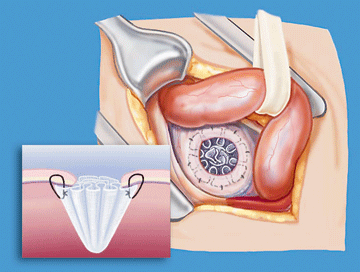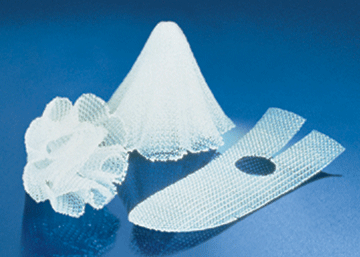Repair of Groin (Inguinal) Hernias
Brent Wogahn, MD
General Surgery
Evergreen Surgical, Eau Claire
What is an inguinal hernia and how do you know
that you have one?
The groin region (area between the abdomen and the thigh) is part of the main abdominal wall. The abdominal wall is made up of several layers of tough connective tissue (similar to that of tendons and ligaments), muscle, fat and skin. Usually, a hernia starts out as a small tear in this connective tissue and expands. It is called "inguinal" because the intestines push through a weak spot in the inguinal canal, located in the connective tissue between layers of abdominal muscle. You can be born with a weakness in this connective tissue or it can be caused through repetitive lifting or straining. This stretching and tearing of tissue can be very painful. If a person’s intestines become twisted or pinched in this hole, that portion of the intestine can strangulate and die. If not repaired quickly, your life can be at risk.

The mesh plug is inserted into the hole and secured in place. Operating and recovery times are reduced with this method.
What are the symptoms?
Pain may not be present, but the majority of patients do complain of it. There may be a bulging of tissue from the hernia as the inner belly contents push out. In small hernias, a noticeable bulge may not be present, but even small hernias can be dangerous. If you suspect that you may have a hernia, make an appointment with your healthcare provider.
Despite the fact that over 700,000 groin hernia operations are performed each year, there is no one preferred method of repair. Today, there are four basic approaches to inguinal hernia repair.
Historically, the standard approach to repair hernias of the groin has been to surgically open the area overlying the hernia bulge and directly suture the tear closed. The national average for recurrence is between 10 to 15%.
In an effort to reduce the recurrence rate, plastic mesh or screen was added to the standard open repair. Its major advantage is the ability to do the repair under minimal tension or strain on the repair and surrounding tissue. This does reduce the rates of repeat hernia repairs, but complaints of increased pain and the possibility of more infections are the main drawbacks.
Recently, there is a push to repair inguinal hernias via a laparoscopic approach. The mesh sheeting is placed on the inside of the belly wall to cover the defect. It is guided into place with the use of a small camera inserted into the abdomen. The advantages of this type of repair are low tension, decreased pain and a quicker return to work. However, complaints of chronic pain from the suture placement and a reported higher recurrence rate are significant issues. This procedure is performed under general anesthesia and entering the abdomen with the laparoscope is not risk free.
The last technique, and the one I currently prefer, is the tension free mesh plug with an onlay patch. The bulge of the hernia is pushed back in and a “plug” of soft plastic mesh is inserted into the hole. It is then sutured into position. Another mesh sheet is then placed over the top and the outer tissue layers are then closed.

A mesh plug can be used to fill the tear in the groin tissue.
Its shape conforms to the size and shape of the defect.
The advantages of this repair are:
- Minimal tension or strain on the repair
- Addition of mesh to reduce the need for repeat repairs
- Fewer sutures to cause nerve entrapment
- Less post-operative pain and chronic pain following repair
- Performed under local anesthesia
- Lower cost. No need for use of laparoscopic equipment
For more information on inguinal hernia repair, or to schedule an appointment with Dr Wogahn, Evergreen Surgical, contact www.evergreensurgical.com or 715-832-1044.



